Working as a family child care educator is a rewarding job and there are some dedicated and talented professionals in our field of work but let's be honest…it is a lot of work meeting programming requirements, Australian EYLF outcomes and scheme or coordination unit regulations.
There are no lunch or morning tea breaks let alone a toilet break….no programming time while another staff member takes over the children's care, no cleaner, no gardener, few sick days or holidays. It can get overwhelming…I know, I've been there this month as I try to combine running a business and family with all the usual household tasks and the landscaping we are trying to finish.
I've learnt it's important to use your time efficiently and ensure you have systems in place that work for you. I know from visiting forums, emails through my blog and messages on my facebook page that many educators are struggling the most with the Early Years Learning Framework (EYLF) outcomes and fitting in their planning and programming.
Although programming does take time and often has to be completed at night or weekends it doesn't need to take over and it certainly doesn't need to be as stressful as I am seeing many educators make it. I think in their quest to understand and ensure they are meeting all requirements, educators are often trying to do more and more to show potential assessors and scheme coordinators that they are fulfilling programming duties.
Don't fall into the trap of doing a little bit of everything to try and cover all areas which takes a long time and yet often doesn't actually achieve any of the outcomes well. But it does ensure stress! I firmly believe quality is better than quantity when it comes to programming.
Let's step back a little and explore what we as family day care educators actually need to do to ensure we are programming correctly and meeting the planning cycle steps as well as EYLF outcomes. I will give you examples below of the documentation and strategies I personally use to meet those steps but please keep in mind that this is a system that works for me and won't suit everyone.
I discuss in this article how to find the system and documentation templates that best work for you, your strengths and personal learning style.
This is by no means a comprehensive list, think of it as an overview to use as a launch pad for extension perhaps.
The Planning Cycle – What Do I Actually Need to Do?
Develop Your Philosophy
…and ensure you understand your scheme philosophy. Keep it simple. Mine is only a few paragraphs…you don't need to write an essay, just list a few of the methods, beliefs and passions that are important to you as a professional working with children in your home and that also reflect the core elements and wording of the EYLF outcomes. Refer to it often when programming.
Your Planning
Decide on a program template that suits how you work and understand things. Don't try to copy one you don't fully understand or that takes you hours to complete. Draw up a few drafts to get something you can work with comfortably. I went through about 5 different templates before I settled on the one below.

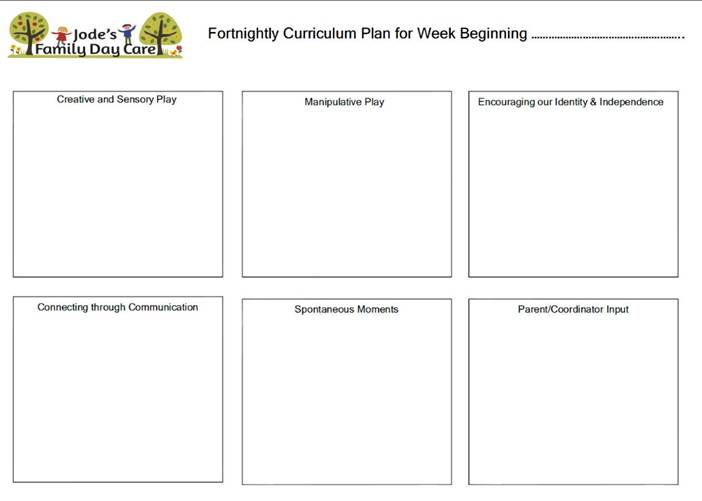
I needed to try them out and see how it all came together before I was happy to move forward confidently. Keep in mind that you are not just doing all this work just for a CDO, assessor or parent to see. Most won't have time to read them at great length but you will!
I do a program for my own benefit first and foremost so it needs to work for me as well as to show how I am meeting regulations and EYLF outcomes. Don't fall into the time consuming trap of writing a fancy program for others that doesn't actually make sense to you. Don't feel you need to link every single one of your activities to an outcome…it will be obvious to those who need to know and if you have a thorough understanding of the EYLF you won't need to be continuously writing links to outcomes down.
On the template above you can see that I prefer the old style box method of planning. It's how I was first taught many years ago and it is how I am most comfortable.
You don't need to throw away all that you have previously used or learnt just because the EYLF is new to you…what you need to do is modify. After reading through the EYLF document I devised area headings for each box that directly relate to outcomes and the terminology…so I know that if I have all of those areas filled in I am covering all outcomes.I don't need to add links.
Some weeks the program will focus a little more on some areas than others but this is ok. It depends on the children's emerging interests and our current learning focus and it is the ongoing learning that is important to show across all of your programming.
I display the first 2 pages for parents on my noticeboard and the third page has space for me to reflect on the week's activities briefly…what worked, what didn't, moments that stood out, activities I could extend on and ideas for next week's planning.
This reflection takes me 10 minutes and also provides a clear link to the next program. You can read more about reflection and evaluation HERE.
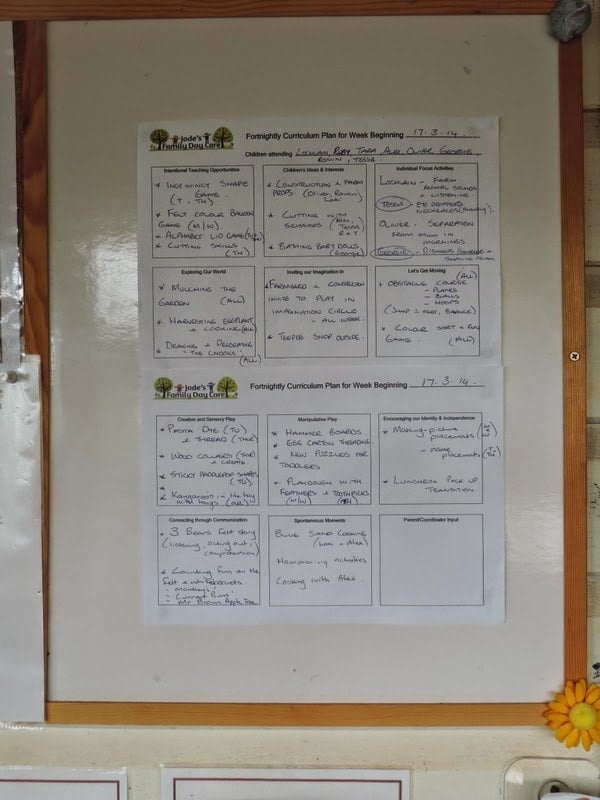
You don't need colour coding, tricky symbols and complicated linking systems to demonstrate your planning for individual children and groups is focused on the 5 learning outcomes. Your activities will do that, your environment will do that, you parent communication and your individual child records and documentation will do that.
But you do need to read the EYLF and think about the activities and environment you plan and present to the children.
You need to show spontaneous activities that have occurred during the week, intentional teaching opportunities, space for parent feedback or questions, some activities that have developed from the children's interests (things that you noticed last week), and individual focus activities (from your observations and analysis – see below).
How you do this is up to you. I'm not going to go through all the different methods as I'm sure you have explored most of them already at length! But remember to find or develop a template that works for you.
Decide whether it is a weekly, fortnightly or monthly program and don't be afraid to go back and re edit areas that might not be working for you. I'm a writer so I find it easy to fill in the form I have devised. I tend to write more than I need to but it makes sense to me and only takes me around 15 minutes and then another 10 minutes to do the reflection and forward planning.
Observing and Recording
Again, work out what suits you and how you work rather than what you have seen others doing. I take a lot of digital camera photos and find them a wonderful prompt when I get the time to sit and reflect on individual and group learning, interests and achievements.
The idea of individual records is so that you can identify and note strengths, interests and goals. There are many ways of doing this including… Formal Observations Learning Stories Photo Collages showing the process of an activity, interest or strength with or without text Portfolios containing information about each child's personality, interests, needs, artwork and activity examples, documentation of learning and progress achieved. Mind maps And many, many others!
What is important to know is that you don't HAVE to do any of those things listed above. It is not a requirement, there is no regulation that states you need to use these documentation formats and if you do with what frequency. Yes you read that right I promise!
What you do need to demonstrate is written evidence of a planning cycle which can show you are observing, noticing, recording, planning and evaluating. There also needs to be written evidence of children’s progress towards the Learning Outcomes. But once you have your own system in place it's not as time consuming as it seems.
If you have been in early childhood for a while you will have learnt to observe and evaluate according to children's developmental stages and progress. This can still be important but the EYLF asks us to consider the child's strengths and what they can currently do rather than their deficits which I find so much easier!
Once you identify a strength or skill that is of particular interest to the child or you as an educator you can then plan to extend or challenge this strength through your planned activities rather than noting what they can't do according to developmental checklists (see my templates and guide to using checklists effectively HERE) and plan to ‘improve' their skill or developmental level which could often be rather limiting to both the child and educator.
I have heard some educators express concern that we are no longer focusing on developmental stages and something ‘might be missed' but all educators should still have a good working knowledge of developmental milestones and early childhood development and stages so this will also continue to inform your practise. Just in a different form.
I personally don't have time to be constantly taking notes, I prefer to be fully engaged with the children and take lots of photos of special moments and general play. I use photos later when I have child free time to really reflect and as the basis for my parent communication, my observations of their learning, my critical reflections, my forward planning and as a way to bring my cycle together. You can see some examples of how I use photos in my planning below.

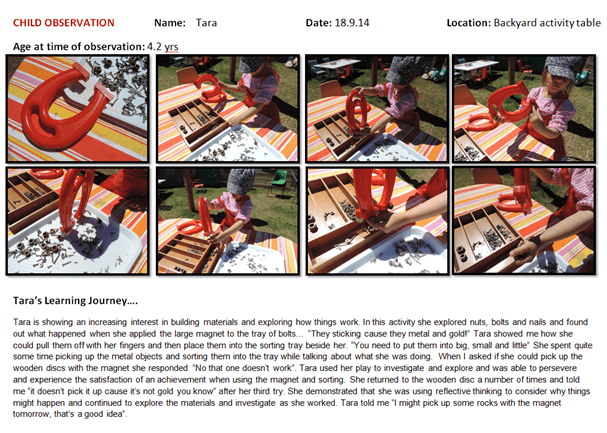
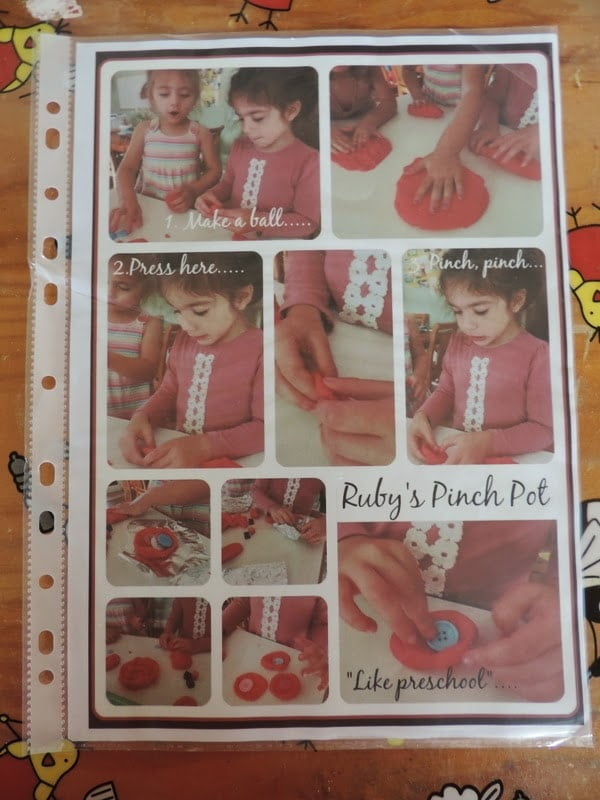

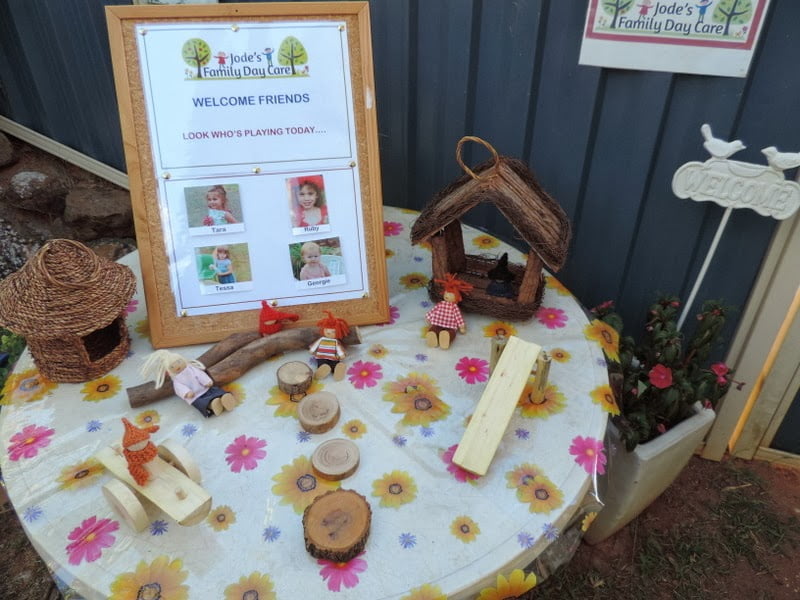
My advice would be not to get caught up in what you ‘have' to show, not to get down about the time it takes you away from the children and play, not to overthink the process. Just do what you can manage in a way that makes sense to you.
Sometimes I don't get to my observations until the weekend but a quick scroll through photos or the daily communication forms I write for parents prompts me to remember something I wanted to acknowledge and extend upon.
Remember to take into account how often a child attends your service and their current needs. I know you already know the children in your care well and if I asked you what they are currently interested in, doing well, having some trouble with or asking questions about I know you could tell me so let that be an indicator of what you can record.
You don't need to be constantly writing and assessing or plastering sticky notes everywhere no matter what people might tell you!
You just need to be looking and documenting when something really stands out to you over a period of time. The reason for observing and documenting regularly is to ensure no one child is being overlooked so don't go overboard with the frequency .
Don't write an observation just because you as the educator need one for this month. It's a waste of your time and the child's. If you feel your scheme has this expectation of you then question it from an informed position, understand why you are doing them and explain your process.
Use what you see each day and already know to inform your documentation and grow from there. Learn more about writing meaningful observations HERE Be able to explain your system and the reasoning behind it to others.
Analysis, Reflection and Evaluation
I need to see things clearly set out to be able to make sense of a planning cycle.
I don't like to clutter my program or my individual and group observation forms with lots of links and reflections so I devised a separate form to tie my observations and planning template together. I used to keep it in my programming folder until completed for that child and then slip it into their personal file folder – now I just save it in a computer file as part of each child's ‘digital learning portfolio'.
This might seem like too much work to you but it's how I need to document to allow my system to be efficient, useful, show clear links, critical reflection and above all not waste my time.
Ok…stay with me friends…So you have a planning template you are filling out weekly, fortnightly or monthly, you have decided on a method or two (or 3 or 4, whatever works for you) for documenting individual and group learning.…now you need to show how your individual and group observations inform your forward planning.
This is where your reflection and evaluation comes in. I use the form below to tie everything together easily. I simply tick the observation format I have used in the left column which might also include the daily reflections I send home for parents as they always include the children's voices and moments of importance and learning.
I then write a brief analysis of the learning evident from this observation and then add a few ideas to extend on this skill, learning or new interest. Pretty simple really and doesn't take much time.
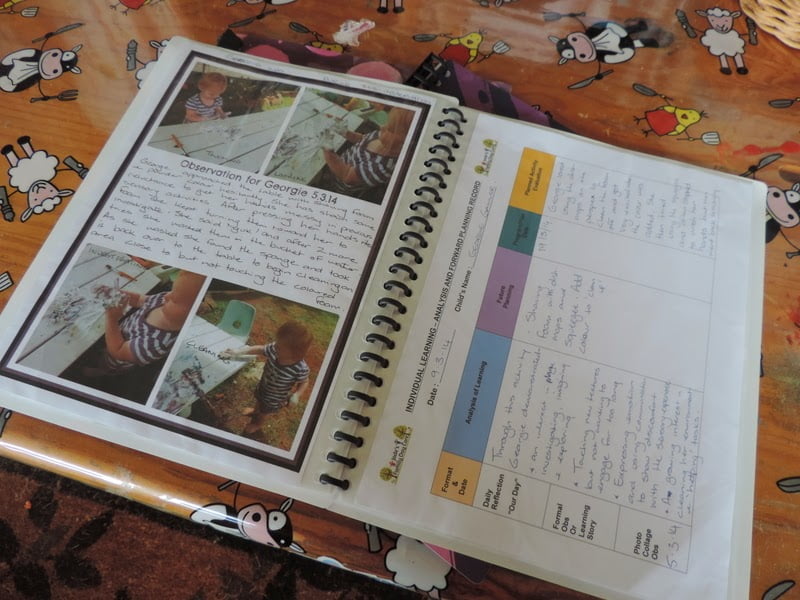
I then write in a date I plan to add this activity to my program template (and add this to the child focus box on my plan with a link to the obs date) and later come back and reflect on the planned activity briefly.
This might not happen straight away but it does happen eventually! Read more about how I link using this template HERE
Environment and Evidence
I don't have lots of little boxes that tell everyone I am linking to certain outcomes. I have a wide variety of planned and spontaneous activities occurring in my program, I have an environment indoors and outdoors that reflects children's current interests and developmental levels, I have a comprehensive parent communication system in place which offers opportunities for parent feedback and program input, displays of children's artwork and photos of past and present activities, evidence of welcoming children and helping them to belong when they attend my service.
You can read more about strategies for encouraging communication and belonging HERE.
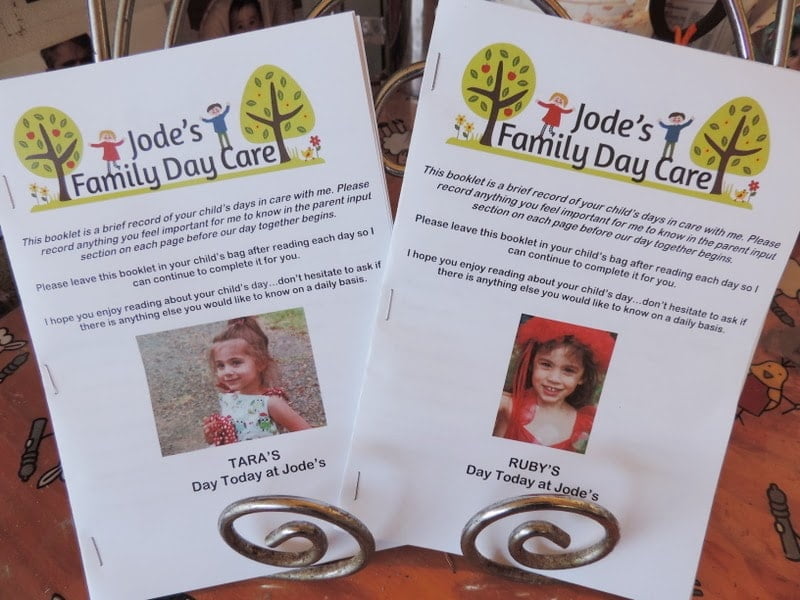
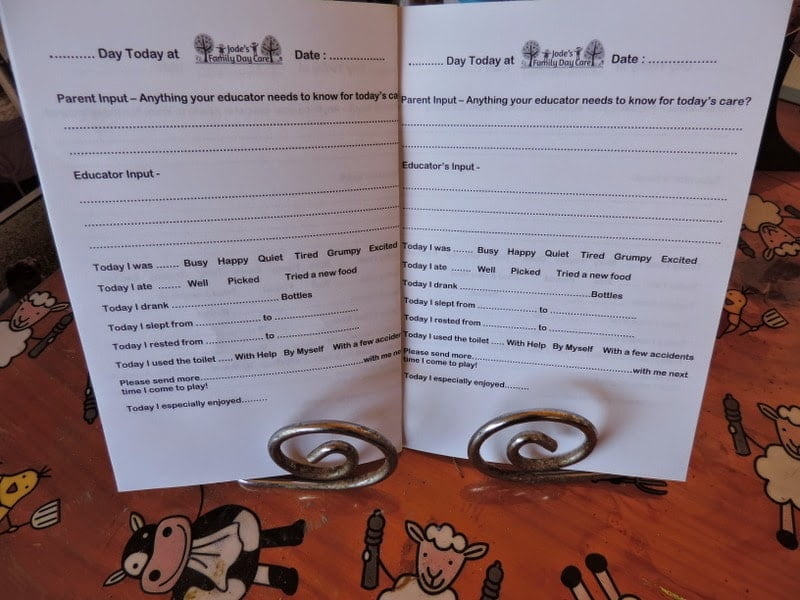
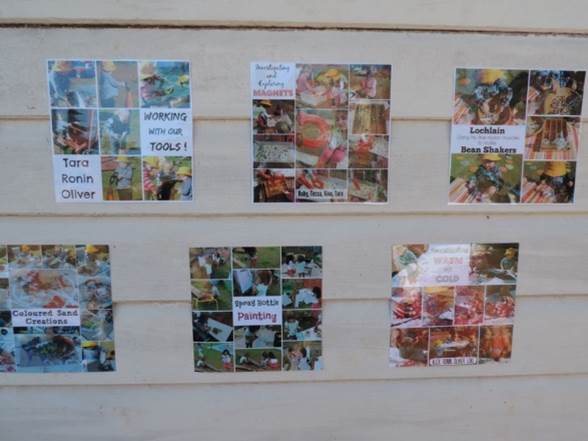

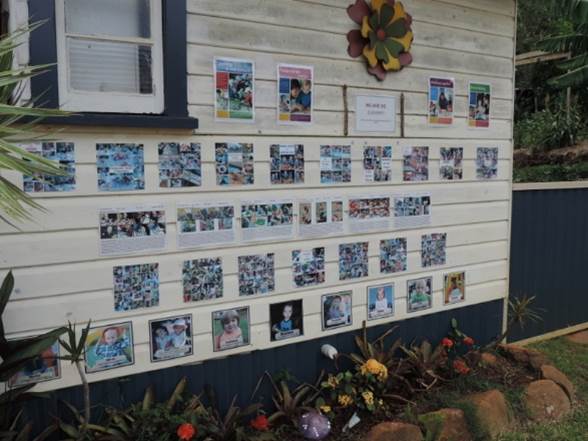

I offer activities each day that I know will promote learning for each particular group but I also plan additional activities, intentional teaching opportunities and interactions that form the basis for individual development and learning.
My documentation merely helps me plan activities for learning efficiently and effectively and helps to demonstrate over time the children's ongoing learning while in my care.
What I'm trying to say is your environment, everyday planning, parent communication, health and hygiene practises and interactions with the children are just as important in the context of evidence as your planning cycle and documentation are so if you are getting stressed about the planning, work on your other areas first and gradually tie it all together in a way that suits you and the children..not an assessor or coordinator.
This article has been huge I know so well done if you stuck with me to the end! Please remember that this is just my interpretation of planning, programming and documentation as a home/family day care educator, what works for me may not for you or your scheme may have more specific requirements of you.
Hopefully you will now feel more confident to ask for clarification or support if you don't understand their expectations though. I have worked as a FDC Coordinator and child care centre Assistant, Room Leader and Director so I have experienced all sides of the planning spectrum, requirements and associated meltdowns!
What I can tell you for sure is that I have been on visits with assessors over the years and what they will look at first and foremost is your interactions and activities with the children, parent communication methods, the materials and resources you have in your environment, evidence of a strong commitment to outdoor play and sustainability, photos of previous play and learning activities and a clear planning cycle that works well for you and shows a pattern of children's ongoing learning.
Not pretty portfolios, reams of scribbled notes, fancy charts, colour coded programs and lots of ticked boxes. Take the stress off your shoulders and get back to doing what you do best….helping children in your care to Belong, Be and Become!
Use my FREE guide to help you visualise the steps of your documentation
A Little About Me
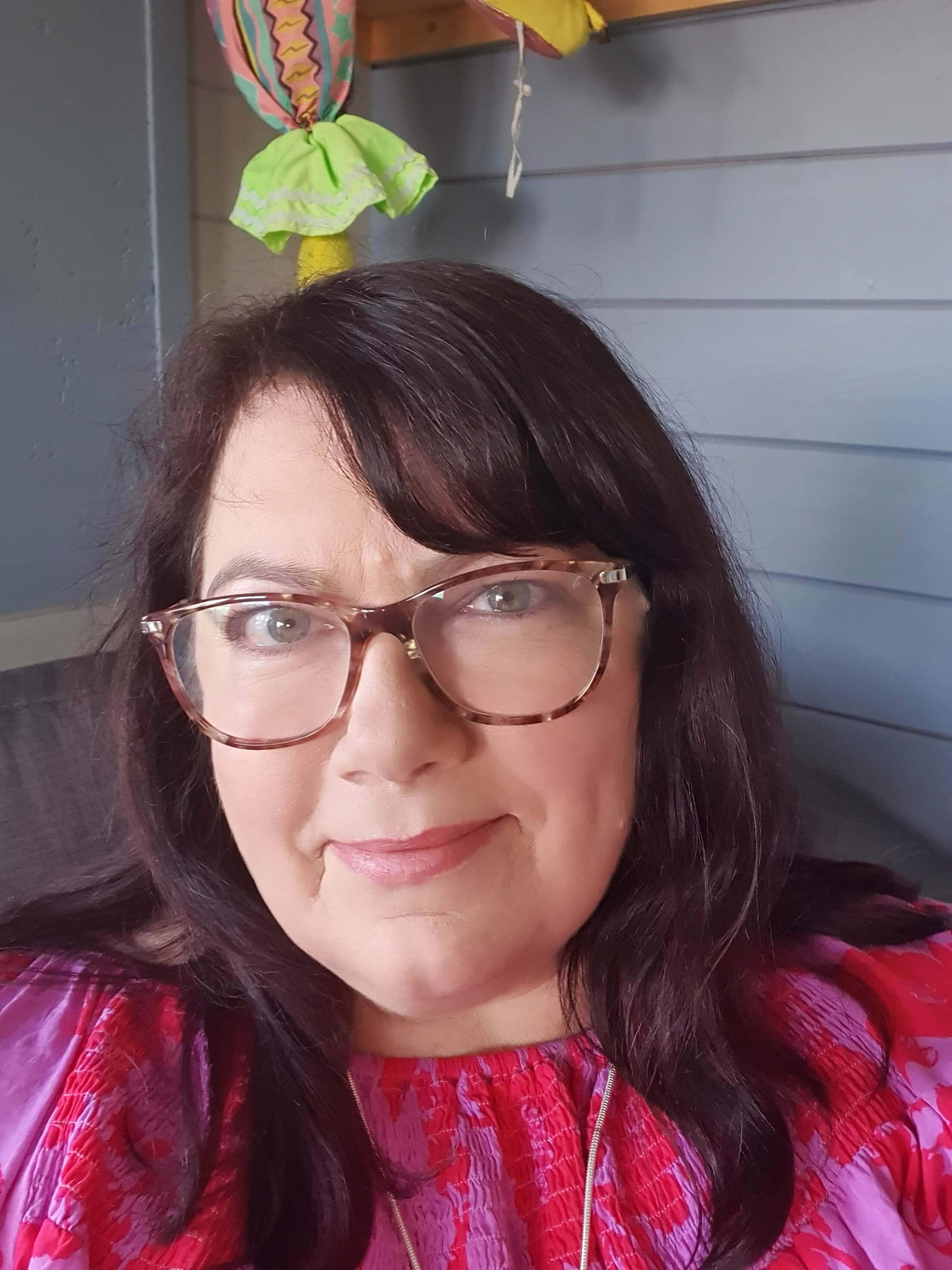
Jodie Clarke is an early childhood professional supporting educators who want and need to stay passionate about the work they do! She has 30 years hands-on experience in the early childhood and human services sectors across many different roles.
Jodie is mum to 3 in Australia and has already helped thousands of educators with their work through her popular blog posts, activity ideas, online training and e-books.
Jodie this is absolutely SPECTACULAR! What a great example this is for others working in the same field. Have you consider turning these into printables? What lucky children you have in your care.
Thanks Kate, you are too kind! If I knew how to do printables I might hehe!
Jodie, you are one super human being!!! I really don’t know where you get the time to do all this AND look after your beautiful family. This is a great read, you put so much time and effort into this for all of us to enjoy – looking forward to the next instalment 🙂
Thanks so much Julie, it’s really just a lack of sleep lol! I’m so glad you found this useful, look forward to sharing part 2 with you x
FANTASTIC!! Thanks for sharing and continually inspiring.
Thanks Renata, your words mean a lot xx
I absolutely love your photo collages. they are a beautiful way of showcasing the children’s learning and play experiences. What program do you use to create them? I have found that Microsoft work is quite time consuming when it comes to adding photos, and looking to do something quite similar but with ease! Please share your wonderful tricks!
Hi, I truly am obsessed with photo collages. I use picmonkey.com online and love how easy it is! it’s free for the basic membership, go and have a play, you will love it!
Thanks Jodie for spending the time writing this process that so many do find daunting. I have worked in the FDC field for over 15 years and still am amazed at what people like yourself are able to do. I will be returning to this again
Thanks so much for your kind words, I always worry people will think I am trying to be a know it all with these sort of posts! It did take quite some time to put together so I really am so happy that it is helping some people as I know it can be such a daunting and time consuming process for some. Thanks for reading along 🙂
Jode, I do so love your blog! I have my head around the cycle of planning – I work in LDC and have for many years, I’m wondering however, if you would share how your families provide input directly into your program and how you document and display these partnerships. Would you be willing to share how you communicate with your families, as I’d Iove any suggestions and photos that you may have!
Thanks in advance,
Alix
Thanks for your kind words Ally! If you visit this link you will see a post I did a month or so ago about parent communication and belonging that might be helpful? https://www.theempowerededucatoronline.com/2014/02/encouraging-family-communication.html
As you will know it’s always difficult to get parents input but I try to include it by writing in things we have discussed re the program or current activities into my plan template at the end of the period or during. Just because it’s verbal doesn’t mean I can’t document it! They also often write in my parent communication books and because I email the ‘Our day’ sheets I receive feedback via email sometimes which can be printed. Have a look at the other post and I’m happy to chat more, you can always email me or message via fb 🙂
OMG! Thank you Jodie for all your help in this blog, I think this is the clearest anyone has ever explained the paperwork side of my job to me!! I find this side of my job so hard but I think its because I don’t really know what is expected of me and how much is enough or too much.. I am much clearer now & feel confident I am heading down the right track! Thanks again, I can’t wait to read part 2 🙂
That’s wonderful Joanne, so glad it’s been helpful as that is why I wanted to share on the blog. I often find it hasn’t been clearly explained just a ‘do this’ type mentality unfortunately which isn’t helpful when you are trying to understand the actual process. Let me know if you need any further help…good luck, don’t let it overwhelm you, it’s not worth it!
Wow, what a woman!! Here I am, been here since 4am this morning TRYING to get my head around programming, observations, reflections & how in the World am I suppose to fit it ALL in, when I start work at 6am & finish at 5:15pm, as well as have a family of my own, hubby + a 14yr old, a 10yr old & a 6mth infant baby. It’s actually all doing my head in, minimal sleep & appetite 🙁 Chilling back at the moment, trying to get my head around it all……..my family HATES that I have MORE work to do when all the kids go home, when, by then, they just want me to themselves. Going to follow your blog before stressing too much, see where your blog, info & support can take me. But I KNOW I MUST get my A into G sooner rather than later, because I’m currently thinking, I have a 70hr week, but only get paid for 58hrs & my own family is suffering, while I’m looking after & taking care of 9 other families. Thanks HEAPS for your time 😉
You have a lot on your plate Beth and I know every educator could certainly identify with you I think! I know you had many suggestions in the educators forum so I won’t add a heap here but I do really think you should consider cutting your hours back or having one day off. I have decided I will start early but am firm on finishing by 5pm, 4.30pm preferably. makes such a difference and allows me some time with my own family. Going to share my routine and a bit about how i fit things into my day soon so that might help a little. Hang in there, you are doing a great job. Work on getting your routine and rhythm sorted before worrying to much about the paperwork, don’t try to sort it all out at once 🙂 xx
I just discovered this blog and I am in love with it! Thank you for doing so much for other parents and teachers. It is evident how much time you put on this blog and I really enjoy it and appreciate it 🙂
It’s my pleasure Eva Marie…thanks so much for your kind words! I’d love to have the time to share here more but comments like yours make it all worth while 🙂
Wow this is impressive! I’m just about to start my FDC and needed to research about documentation etc and I’m actually blown away by all your efforts. I really like your ideas and they have given me more direction in my plans when I start my FDC. Thank you Jodie. Keep doing what your doing! It’s awesome
Thanks so much for your wonderful information and ideas, I’ve just started FDC and this certainly helps minimise the overwhelm.
Many thanks, so glad I found you.
I’m so glad I can help, it’s awful to feel overwhelmed in a profession you love x
do you have a link or are we able to get the templet for the our day pages ?
Hi
just wanted to know if you do daily nappy chart,sleeping chart for parents to see.I have babies and i don’t know if i should be doing it for parents to see and how to make up one that is easy for parents to read.Also do i need to do a fresh copy every day or can use the same one ?
Thanks for your help.
Wow this is amazing just wish I had some brains to put it together , I have trouble trying to think of what to document and plan
Running FDC business is not easy until you have better document and plan. I have been in the family day care business since 2013, and trying to do better with my document and plan, thank you for the great information.
It’s certainly a challenging role but getting the documentation and paperwork into a system can really help. I’m glad you found the article informative!